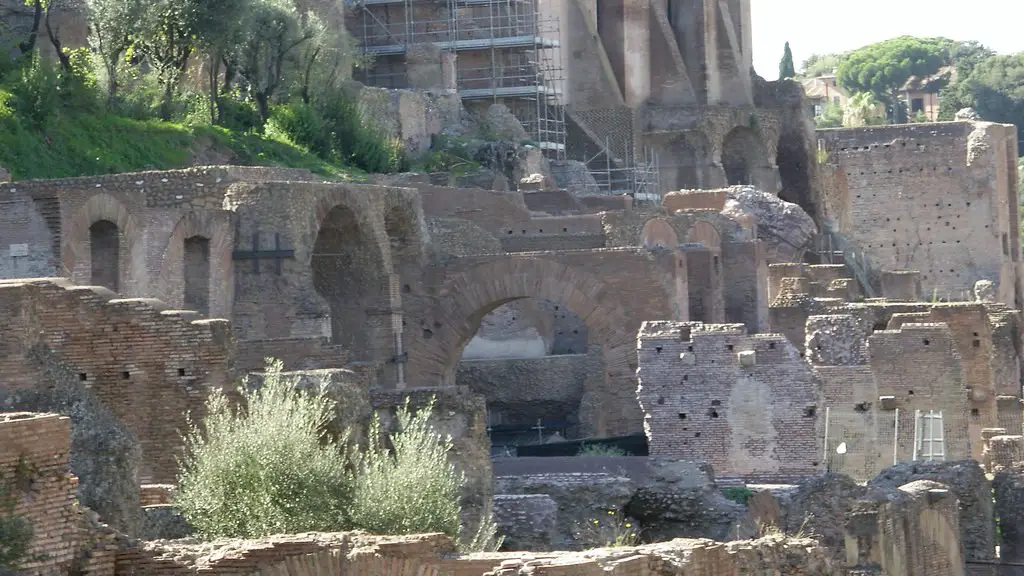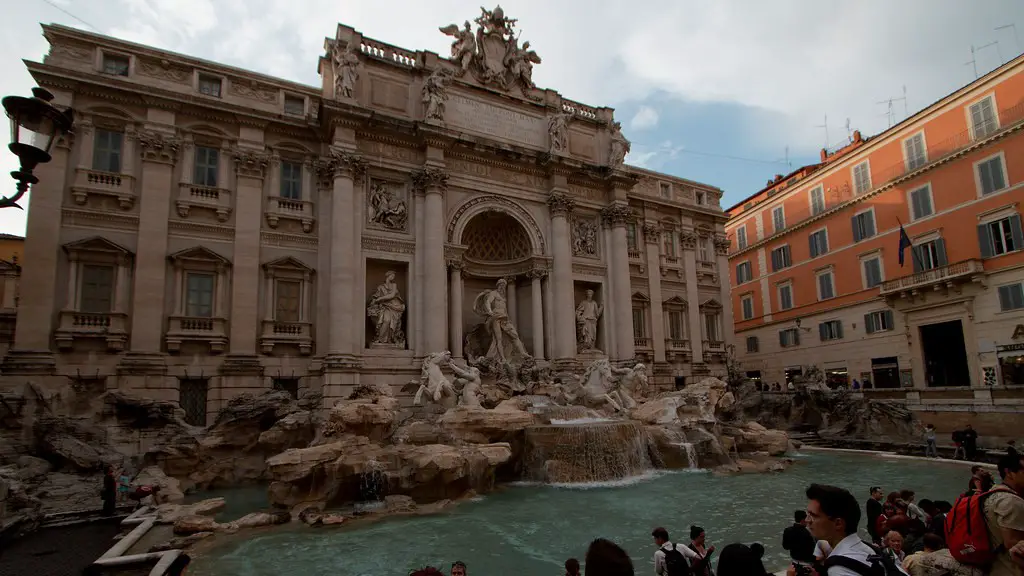Overview
Located in the central-western region of the Italian peninsula, Rome is one of the oldest cities in Europe and its rich history is evident in its archaeological ruins, sculptures and artwork, a testament to its vibrant past. Rome’s geography has remained mostly unchanged since ancient times, and its terrain is dominated by the Apennine Mountains which form a discontinuous belt along the peninsula. Rome has a Mediterranean climate and is known for its hot, dry summers. As a result, Rome’s vegetation is characterized by vegetation usually found in the Mediterranean region, most of which is adapted to the extreme climate.
Natural Vegetation of Ancient Rome
Since the time of the ancient Romans, some of the vegetation in Rome has remained constant. This includes several species of native trees such as holm oak, chestnut and cypress that thrive in the Mediterranean climate and are known for their hardiness. These species were among the trees that the ancient Romans used to line their roads and highways. In addition, many varieties of grasses and shrubs are also native to Rome. Besides the shrubs, which provide food and shelter to animals, the grasses produce abundant flowers and help to improve the soil quality.
Other vegetation that can be found in Rome includes several species of vines and fruit trees. Most of these were introduced by colonists or traders during the medieval period, such as the fig and olive tree. Grapevines were also a popular choice for planting by the ancients, both as a dietary staple and for the production of wine. The Romans were also noted to have planted rose and lavender shrubs around homes and gardens.
The most important element in Rome’s vegetation is the olive tree. It has been a part of Rome’s landscape since ancient times and it’s presence can be seen in the city today. According to experts, the olive tree was probably introduced by Phoenician traders, and it quickly grew in popularity among the ancient Romans. Olive oil was both an essential part of their cooking, as well as a major component of their religious ceremonies.
Ancient Roman Cultivation
The ancient Romans were adept farmers, and they used a variety of techniques to improve the soil’s fertility. They would rotationally cultivate different crops to avoid depleting the soil’s nutrients and often used fertilizer to enhance the growth of their crops. This was especially important in areas near Rome, where the soil was particularly poor. Ancient Romans also practiced terrace farming which involved creating terraces on the hillsides to maximize the surface area available for cultivable land. They also developed a system of irrigation which helped to counter the arid climate, allowing for a higher yield.
The range of crops grown in ancient Rome shows the level of cultivation the Romans achieved. They had a range of grains such as spelt, wheat, millet and barley, as well as vegetables like lettuce, cabbage, onions and garlic. Fruits such as grapes, olives, pears and apples were also grown. The Romans also had a wide array of herbs which were used for medicinal purposes, seasonings and for religious ceremonies.
Modern Rome
Today, Rome’s vegetation is much the same as it was in ancient times due to the city’s geography and climate. The majority of native trees and shrubs remain and even the cultivation practices are still in use with the implementation of modern agricultural techniques in recent times. However, Rome’s landscape has also changed due to the city’s rapid expansion. This has led to the destruction of some of the valuable moist meadowlands and wetlands that were home to a variety of animals.
In recent years, there has been a focus on replanting Rome’s vegetation to restore its wetlands and ecological balance. Numerous nature reserves have been created and reforestation programs have been established. These initiatives have helped to restore the environment to the way it was in antiquity and have improved the air quality of Rome.
Human Impact on Rome’s Vegetation
Rome’s natural vegetation has been greatly affected by the human presence in the city. Development and industrialization has taken over much of the city’s open spaces, which has led to the destruction of much of the vegetation. In addition, pollution from the city has also taken its toll on the vegetation, resulting in the deterioration of trees, shrubs and other vegetation throughout Rome.
As such, Rome has witnessed the gradual disappearance of its native plants and animals. This has had a significant effect on the overall biodiversity of the city, and many species are now critically endangered due to the loss of their natural habitat. To counter this, conservation initiatives have been implemented to ensure the preservation of Rome’s native plants and animals and maintain the city’s already fragile ecological balance.
Preservation Efforts
The protection and preservation of Rome’s flora and fauna is essential for the city’s well-being. In response, several organizations have been formed to protect Rome’s natural environment and maintain the city’s ecological balance. The Nature Conservancy is one such organization which supports the preservation of Rome’s wetlands, forests and woodlands and strives to protect the city’s biodiversity.
In addition, the Italian Wildlife Trust, which was established in 2001, has implemented several programs to protect Rome’s native species and habitats. The trust works with local residents, businesses and organizations in order to protect areas that are threatened by development. It also promotes ecotourism throughout Rome and its surrounding areas.
Conclusion
Ancient Rome’s vegetation has been greatly affected by the presence of humans in the city over time. While areas of the city have been preserved, development has taken its toll and much of Rome’s native vegetation has been destroyed. While organizations and conservation initiatives exist, more needs to be done in order to preserve Rome’s unique flora and fauna and maintain the city’s ecological balance.



